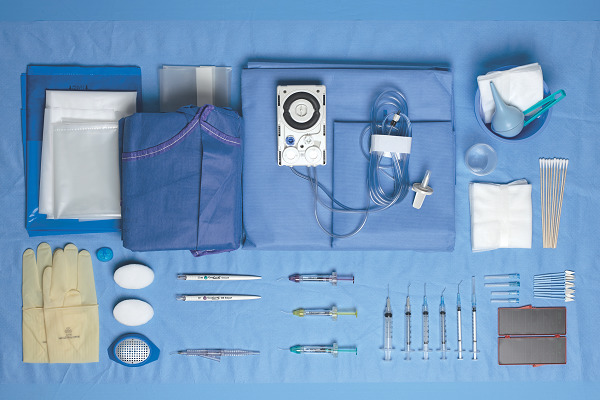*SPONSORED CONTENT
Governed by a mandate to provide universal access to high-quality, value-based care, Canada’s healthcare system faces ongoing challenges and opportunities for improving cost- and time-efficiencies across departments and facilities.
Achieving these efficiencies is especially critical for operating rooms focused on cataract and retina surgeries, which have long wait lists that have become even longer because of COVID-19. According to the Canadian Institute for Health Information, in 2020 around half of Canadians did not undergo their cataract surgeries within recommended time frames, compared with roughly one-third in 2019.[1]
Yet by making just one change – in particular, switching from generic to comprehensive surgical packs – in their operating rooms, Canadian hospitals can realize numerous benefits for patients, doctors and for the healthcare system. Before a cataract procedure can be performed, each item required for surgery must be ordered, received, stored, and brought to the operating room storage space. The circulating nurse pulls each required item from inventory, and then unwraps each element for the scrub nurse prior to every surgery. Each step has a hidden cost of labour hours.
A recent budget impact model study by Alcon found a community hospital performing 2,500 cataract procedures per year can save up to 287 labour hours for materials management by using one system of pre-assembled instrument trays (Custom Pak®) customized for each practice, surgeon and case, and that include both pure disposable supplies, such as syringes, and sterile equipment-specific surgical supplies, such as surgical handpieces.[2]
Surgery preparation time is also reduced by making this change. This in turn allows for potential additional procedures totalling almost 200 a year.2 From a financial perspective, the OR realizes more than $37,000 in cost savings.2
At an aggregate level, a province that does 50,000 cataract surgeries per year realizes savings of more than 5,600 hours and frees up room and time for more than 3,900 additional procedures. The total potential hidden costs would be reduced by close to $737,000.2
The results are similarly positive for retina procedures. At a facility with 1,000 retina surgeries annually, switching from a generic pack to a complete custom surgical pack saves about $10,270 each year in potential hidden costs.2 This one solution could allow for 127 additional retina procedures.2
“As a user who switched to a complete custom surgical pack system, our quality, efficiency and value were taken to a much more elevated level,” says Donna Punch, past Clinical Director, Kensington Eye Institute. “The custom pack system hit all the buttons, streamlining operations while at the same time adding superior quality and significant savings.”
The time- and cost-savings from complete surgical packs can be attributed in part to efficiencies in supply chain and materials management procedures. Instead of sourcing instruments from multiple vendors, materials management departments deal with one service. There are also time savings in the OR, resulting from reduced handling of surgical supply material for surgical preparation and from streamlined storing and pulling of supplies.
The benefits of switching to complete custom surgical packs go beyond ophthalmological procedures. In a study of custom surgical splint packs for orthopedic surgeries, pre-surgery preparation went from 209 seconds using a bulk supply pack to 86 seconds using a custom splint pack, while materials retrieval time decreased from 68 seconds to 33 seconds. Total splinting time shrank from 526 seconds to about 350 seconds.[3]
For doctors and patients, the benefits of upgrading to complete custom surgical pack systems mean smoother, more seamless OR experiences and higher-quality care delivered within recommended timelines. Ultimately, these benefits translate into greater opportunities to ensure the sustainability of the healthcare system, today and in the future.
[1] Canadian Institute for Health Information. Wait Times for Priority Procedures in Canada, 2021. Accessed November 10, 2021. https://www.cihi.ca/sites/default/files/document/wait-times-chartbook-priority-procedures-in-canada-2016-2020-en.pdf.
[2] Alcon data on file. 2020.
[3] Gonzalez TA, Bluman EM, Palms D, Smith JT, Chiodo CP. Operating room time savings with the use of splint packs: a randomized controlled trial. Arch Bone Jt Surg. 2016;4(1):10-15.




